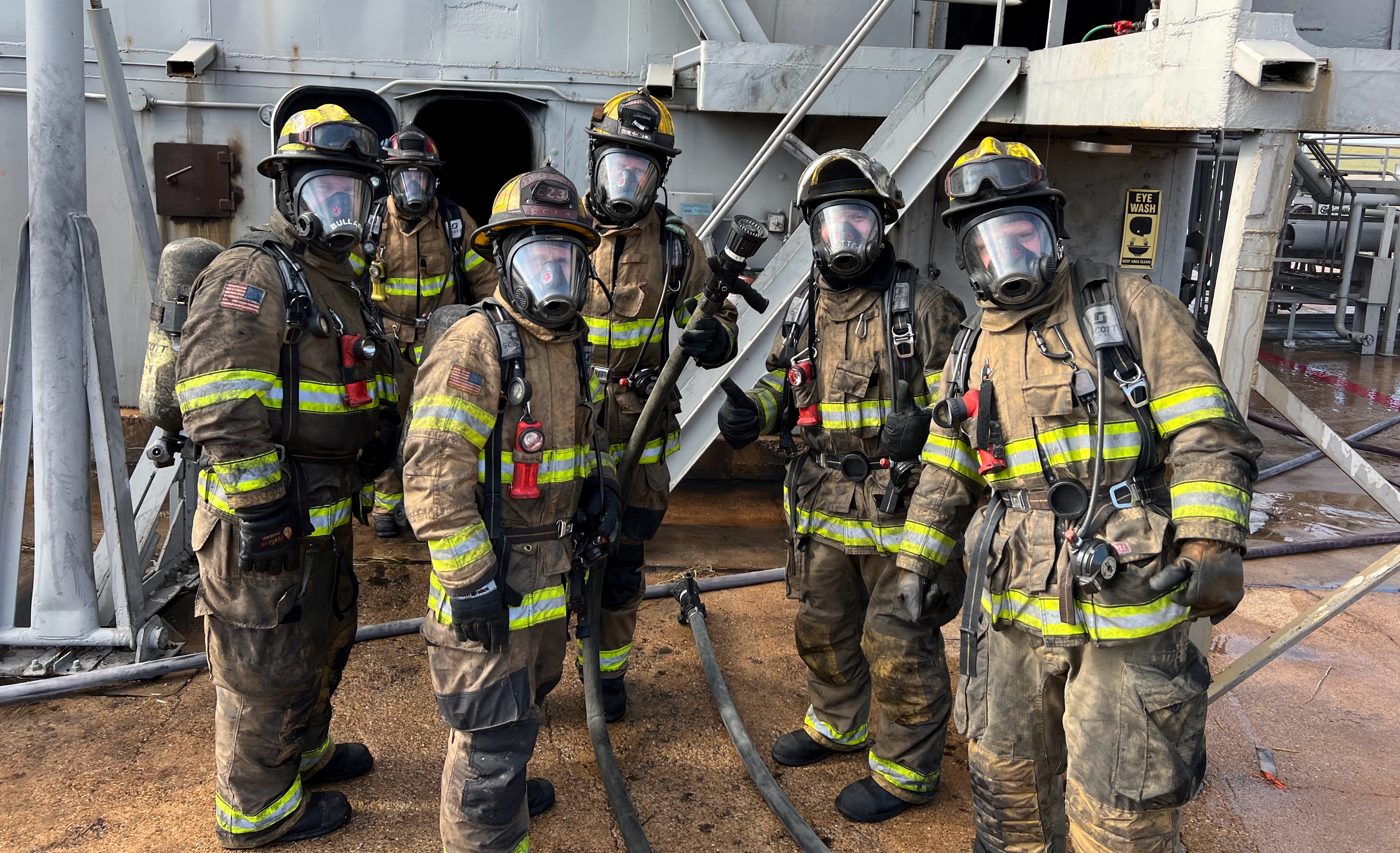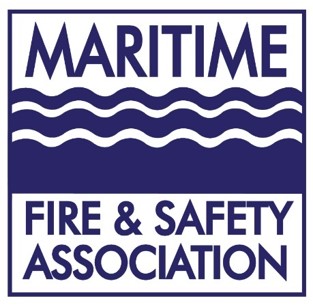From Alpha to Breeze...
On the afternoon of January 31st, a vessel loading grain in the Portland harbor experienced a fire onboard. Portland Fire & Rescue responded immediately with crews that are trained for just this type of emergency.
Many things came together to keep this event from becoming a tragedy. The fire was in a storage area near the laundry, not the engine room. The facility had completed loading the grain onto the ship and the cargo holds were closed. The fire was quickly noticed, and crew responded according to their training. Notification was made via 911 immediately. The facility was in close proximity to a well-staffed fire station who responded quickly and appropriately with highly trained personnel.
There are export grain elevators dotted up and down the Columbia-Willamette River system. They can be seen in Portland, Vancouver, Kalama, and Longview. In addition to grain elevators there are many other maritime facilities where ships dock. Facilities handle container operations and bulk commodities such as potash, soda ash, cement, fertilizer, and grain. In addition to all of these facility docks, there are 11 designated anchorages where ships await their turn at the dock.
Back in 1982 there was a shipboard fire at one of these other facilities. The response did not go as well as it did last month on the M/V Breeze. In that case, a fire in the engine room destroyed the M/V Protector Alpha. That fire took the life of one U.S. Coast Guardsman and paralyzed a local fire fighter.
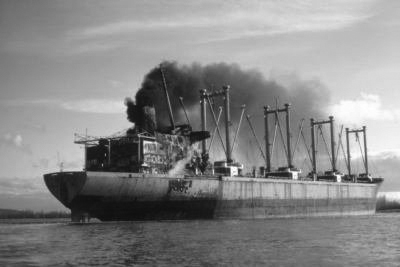
What’s happened over the last forty years?
In 1983, port authorities, private companies, federal and state agencies, counties, and fire districts responded to the tragedy, coming together to form the Maritime Fire & Safety Association (MFSA), to promote fire protection, safety, and enhancement of navigation on the lower Columbia and Willamette Rivers. Two states – Oregon and Washington – are involved, as the lower Columbia River forms the boundary between them. Public Ports and private facilities located on both sides of the river; many counties and cities are also affected.
Both private and public entities had significant vested interests to ensure and enhance a sustained response and preparedness level. Furthermore, after the fire that destroyed the M/V Protector Alpha, took one life, and injured a second person, motivation was high. The result was the establishment of a basic structure: a mechanism to generate financial support and an association to manage the coordination of specialized training and equipment for land-based firefighters to respond to shipboard fires. The MFSA is a non-profit organization whose mission is to be the leading provider and advocate of safe, environmentally responsible, and cost-effective response services to commercial vessels for the Columbia Willamette River Marine Transportation System. In 1983 the MFSA created what is known as FPAAC – the Fire Protection Agencies Advisory Council. FPAAC is made up of 13 fire agencies along the river: Astoria Fire Department, Clark County Fire District No. 6, Clark-Cowlitz Fire Rescue, Clatskanie Rural Fire Protection District, Columbia River Fire & Rescue, Cowlitz County Fire District No. 1, Cowlitz County Fire District No. 5, Cowlitz 2 Fire & Rescue, Longview Fire Department, Portland Fire & Rescue, Port of Portland Airport Fire & Rescue, Scappoose Rural Fire District, Vancouver Fire Department as well as the U.S. Coast Guard. They are joined through a mutual aid agreement which allows participating agencies to request assistance abating a marine fire emergency located within its jurisdiction.
“The value of MFSA/FPAAC to the Columbia River was clearly evident in the recent response on the fire on the 623-foot motor vessel BREEZE by the Portland Fire & Rescue,” stated Chief of the Inspections Division with USCG Sector Columbia River, LCDR Eugene Chung. “The excellent training directly contributed to the on scene team’s rapid, well-coordinated and effective response to the unique shipboard fire and prevented a catastrophic disaster to the vessel, its crewmembers, the waterfront facility, the port and the environment.”
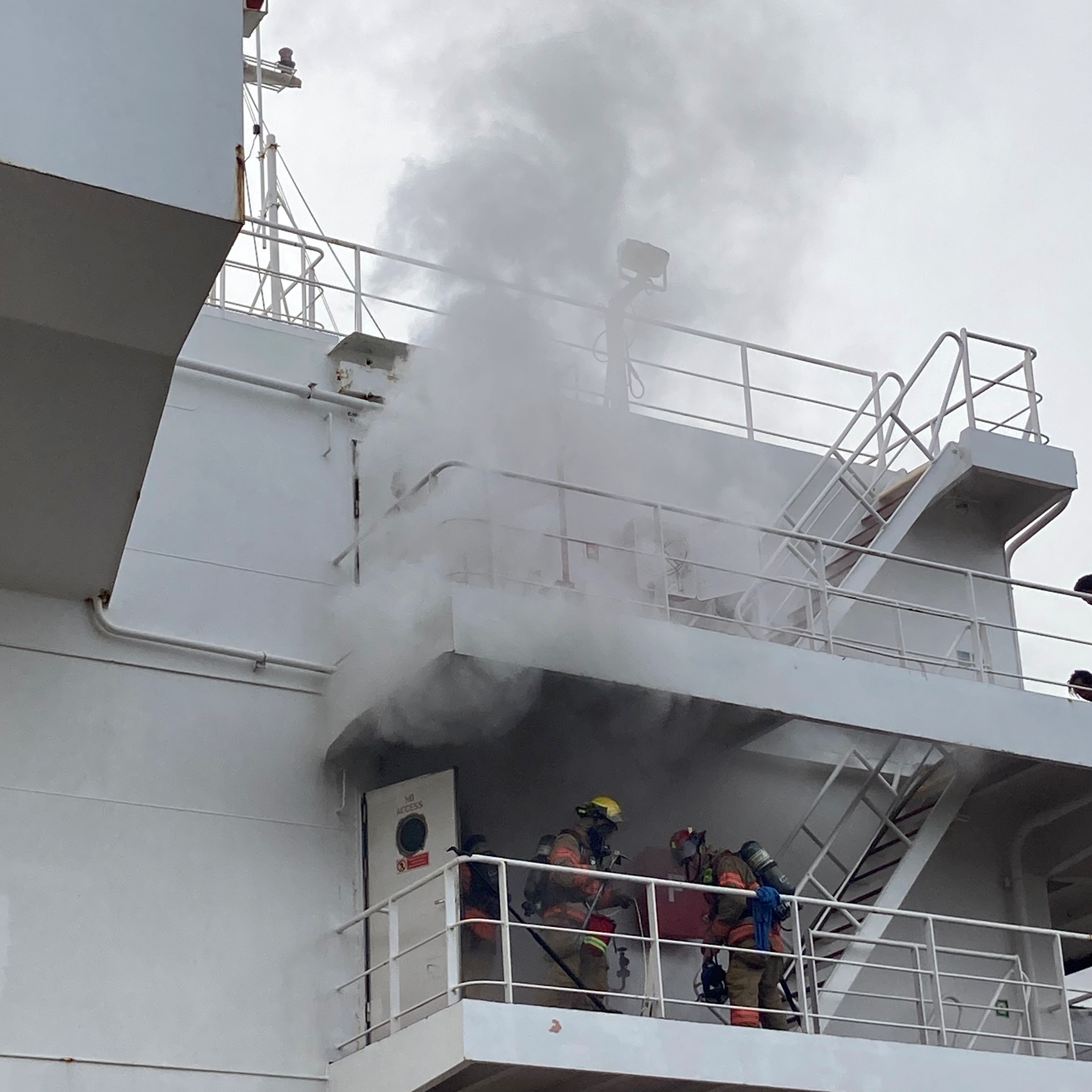
Where does the support come from?
FPAAC is supported by the agencies with their time and expertise. The Council itself consists of representatives from each participating fire agency, two standing sections (Planning and Logistics), a Chairperson, a vice-chair and MFSA staff. This group meets quarterly to review and discuss a variety of relevant needs including; recent and future trainings, equipment schedules, annual budgets for training and equipment, best practices for mitigating maritime emergencies by working with outside agencies, and FPAAC management policies/documents. In addition to the many levels of support detailed above, FPAAC also provides maintenance of specialized shipboard firefighting equipment housed at member agencies.
“As a Fire Chief and a proud member of MFSA’s FPAAC, I can confidently say that we are actively preparing and training for marine emergency situations, said the Chair of FPAAC, Chief Steve Sharek. “The FPAAC training program has played a crucial role in equipping us with the necessary skills and equipment to respond to marine emergencies safely and effectively.”
“It would be a challenging feat for smaller departments such as Clatskanie,” Sharek adds, “to meet the manpower capabilities that larger agencies are able to, and that is why it’s vital for FPAAC to include all agencies along the Columbia River.”
“The training and commitment from FPAAC agencies and partners have allowed us to grow exponentially in terms of our confidence and abilities to respond to marine incidents. Our success as an organization is attributed to the collective efforts of everyone involved in a response. This not only includes fire agencies, but also the ports, terminal managers, salvage organizations, training instructors, and vessel crews. It takes each and every one of us to come together and ensure our abilities in a response.”
FPAAC is Supported by MFSA’s membership. “TEMCO is proud to support MFSA/FPAAC,” said Tom Rodman, Plant Manager for TEMCO’s two regional facilities, “which has been a valuable resource for enhancing safety in commercial marine operations. As a grain facility, we are keenly aware of the potential risks and challenges associated with shipboard fires. We believe that TEMCO’s participation in FPAAC will greatly benefit the facility by providing access to high-quality training and support in the event of a shipboard emergency. Through FPAAC, TEMCO will be better equipped to safeguard the vessels we service.”
One of the critical factors that came out of the formation of the MFSA was the decision by member facilities to assess a fee to vessels calling at their dock to support the program. This source of revenue allowed the newly created MFSA to build the administrative framework needed to manage the programs. MFSA also relies on the significant support from the members in other ways. Many offer up their facilities to support trainings and exercises. When FPAAC personnel can train at local facilities they gain familiarity with the dock areas, have opportunity to work on and around ocean going vessels and develop relationships with port and facility operators.

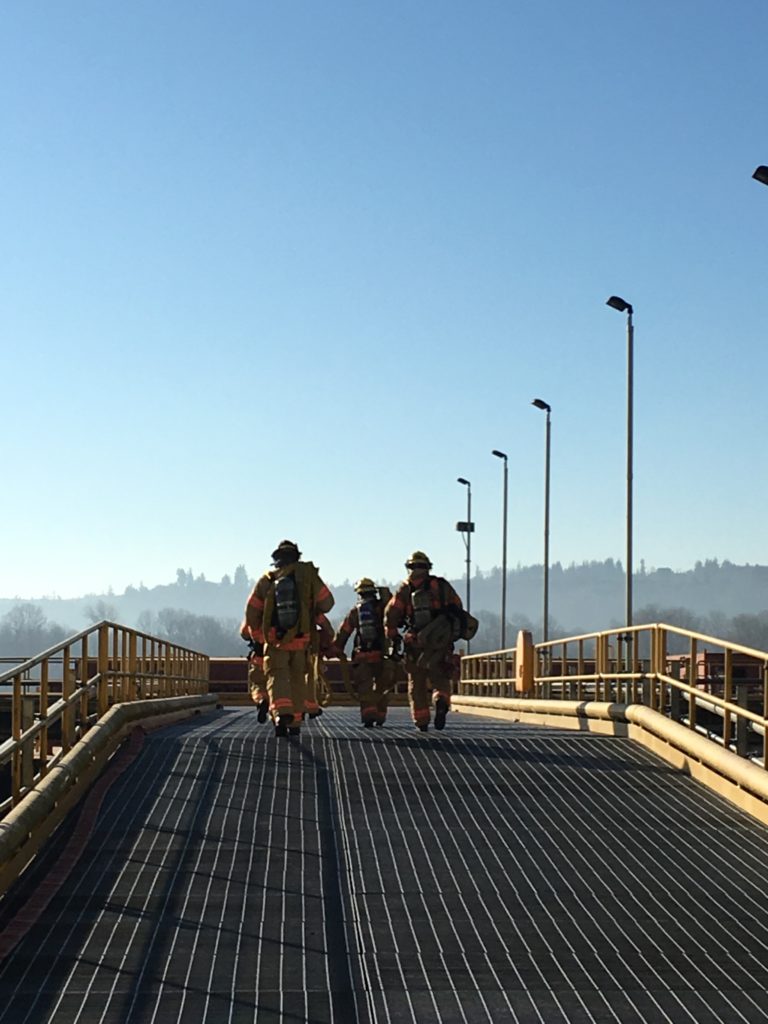
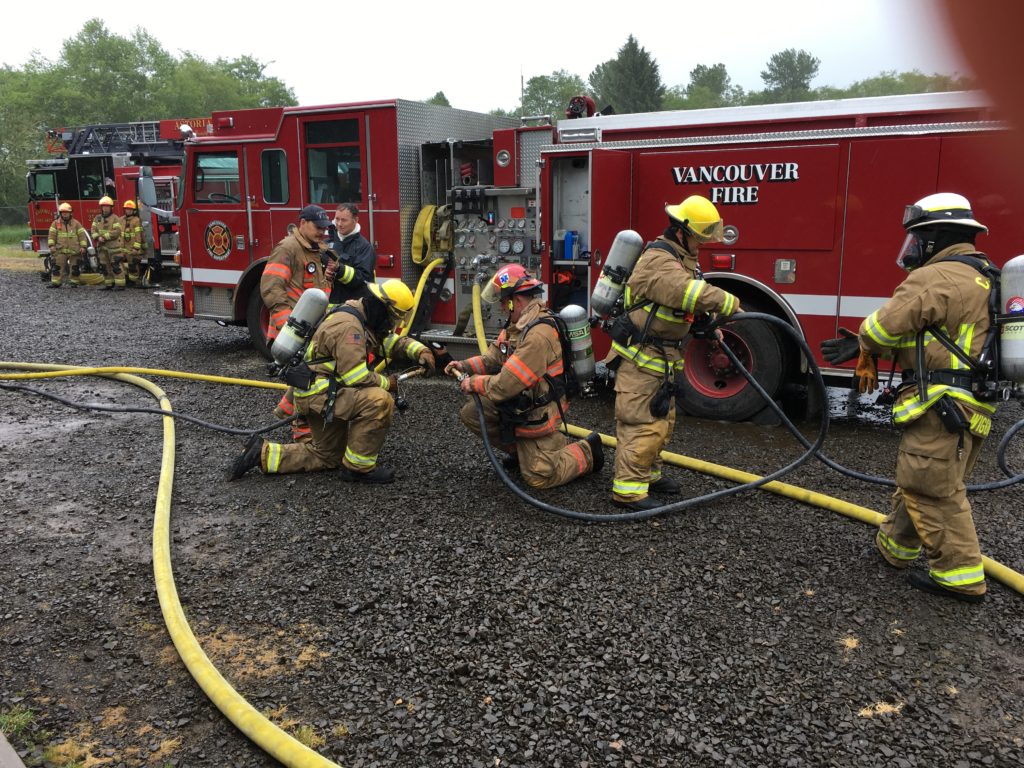
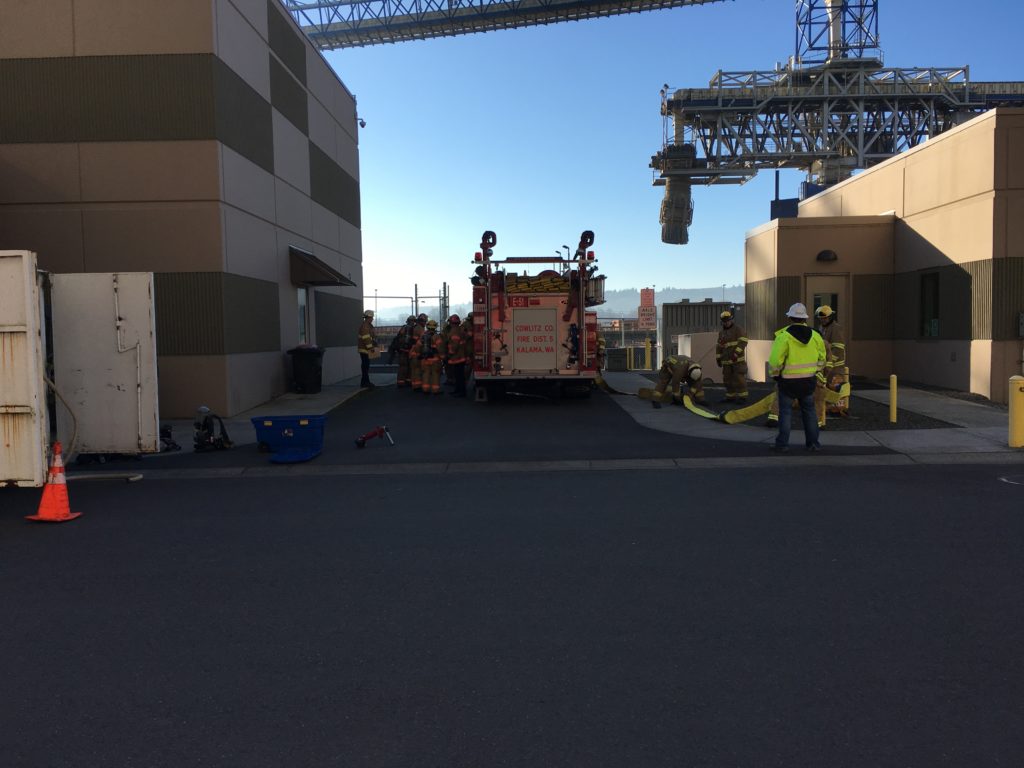
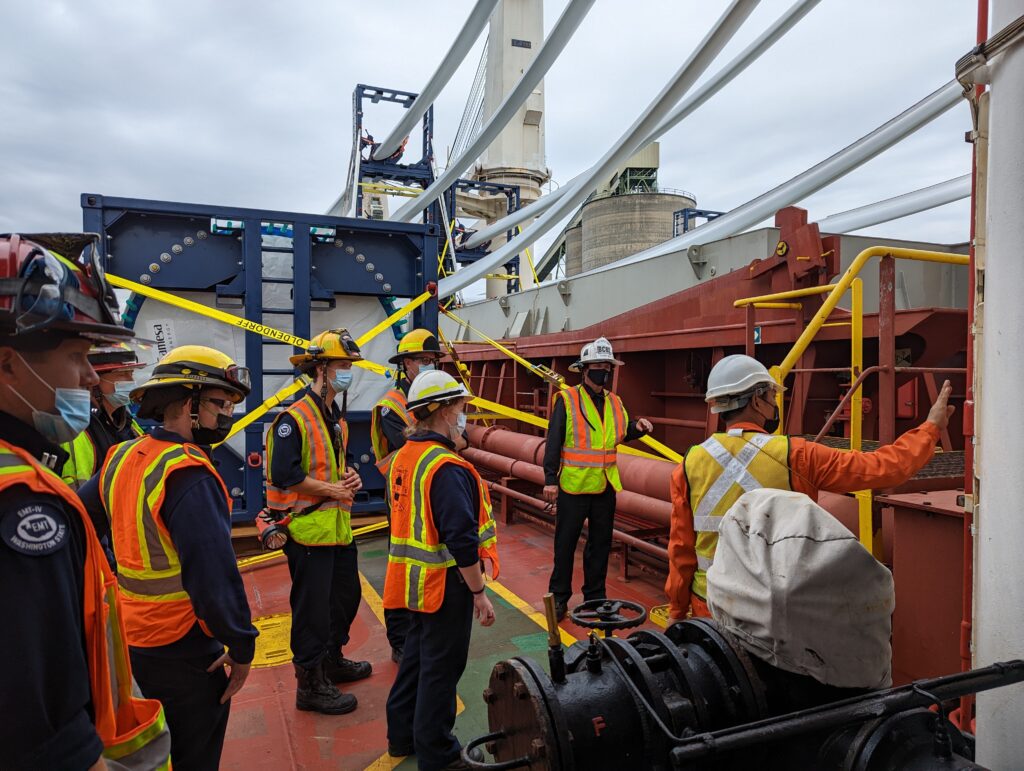
Meeting Unique Training Needs
There are many inherent physical conditions and hazards in marine firefighting which differ fighting fires in buildings. Marine firefighters require specialized skills and knowledge to combat marine fires safely and efficiently. To support the member agencies MFSA/FPAAC provides a variety of focused trainings.
All fire fighters go through hours of training with their agencies. This training, however, does not address the challenges of a shipboard fire. Local agencies, especially smaller, rural ones, don’t have the budget to absorb these additional training hours. That’s where grant funding is critical. In 2022 over 2300 hours of training were attended by agency personnel. FPAAC has received FEMA support through the Port Security Grant Program awards to help offset these expenses. The funds have allowed FPAAC to provide reimbursement to agencies to attend certain classes. Grants have aided in funding projects such as updating regional fire plans and operations guides. A grant also recently allowed FPAAC to foot the bill to send 30 local firefighters to Texas A&M’s Engineering Extension Service (TEEX) for a week of training.
FPAAC has different levels of training, depending on the role and expected participation.
Awareness – The Awareness Level curriculum covers basic information needed to operate safely in the shipboard environment and was developed to be a two‑hour classroom-based lesson. All FPAAC Agencies have access to the curriculum and trainers.
During 2022, there were two in-person Awareness classes hosted by FPAAC’s training coordinator. Enrollment this year was higher than normal due to turnover seen by some agencies. MFSA has also extended their outreach for this training to non-member agencies that are interested – especially those who neighbor a member agency and have mutual aid agreements.
Operations – The Operations Level curriculum addresses more intermediate topics and tactical skills for shipboard firefighting. It is a full-day course consisting of six classroom hours and a vessel tour. The ability for responders to board and tour a commercial ship is crucial to aid in their understanding of the challenges.
At the Operations Level class held last year, six agencies combined to send 39 firefighters to be trained. MFSA staff works with local ports and shipping agents to coordinate the availability of a vessel to board.
Technician – FPAAC Technician Level training includes instruction and practice with equipment that is unique to ship fire response and not used in structural firefighting. Although the number of participants fluctuates, FPAAC has committed to support up to 42 personnel to receive and maintain Technician Level training, which requires four full-day trainings each year and ensures consistent learning, practice, and reinforcement of hands-on marine firefighting techniques.
This level of training demonstrates the largest commitment by agencies. The Technician training fills a critical role in a response – providing the specialized knowledge alongside other firefighters with an Operations or Awareness level of understanding. This training accounts for nearly 1400 of the 2300 hours spent during the year.
Command Exercises – The required training to manage the unique complexities of command of a marine fire incident is critical and unique. In Marine Fire Command exercises, company officers from FPAAC agencies participate alongside FPAAC Technicians in a guided tabletop exercise designed to represent a significant marine fire incident. The officers learn the tactics specific to managing a marine response, as well as resources and responsibilities specific to the region.
There are no other training programs in the Pacific Northwest providing the depth of tactical training for shipboard response found in the FPAAC training program. Its development enables FPAAC agencies to receive training locally, providing a regional asset of trained Technician Level marine firefighters, using tools and equipment available in our response system.
“The Port of Longview has been a long-time supporter of the maritime fire protection program,” said Port of Longview Operations Manager Larry Landgraver. “We take every opportunity to participate in trainings that better prepare fire agencies to respond to shipboard emergencies along the river. While the main objective is preserving life and safety, it’s important to note that ports like Longview are owned by the local community. FPACC is a critical line of defense in preserving public assets.”
“The Columbia River is a critical trade gateway and the FPAAC program is one of many safeguards in place to ensure it remains open for business.”
The M/V Protector Alpha and the M/V Breeze are examples of shipboard fire responses on opposite ends of the spectrum. MFSA and FPAAC exist to ensure that the capabilities are in place for a well-organized response should the need arise. Chief Sharek said, “Thanks to MFSA, we have a much safer response capability, as we are equipped with the knowledge of what to do and what not to do in a marine incident.”
